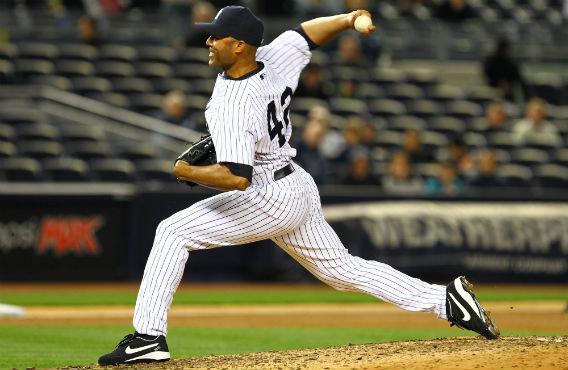New York Yankees relief pitcher Mariano Rivera tore his anterior cruciate ligament while shagging balls during batting practice on Thursday. On the first day of the NBA playoffs last weekend, both Derrick Rose of the Chicago Bulls and Iman Shumpert of the New York Knicks tore their ACLs, too. Why do so many athletes suffer this injury?
Because we weren’t built to leap and cut. The cruciate ligaments are located inside the knee joint, connecting the underside of the femur (thigh bone) to the top of the tibia (one of the shin bones). The anterior cruciate ligament’s main duty is to prevent the tibia from sliding in front of the femur and out of joint. (See this video.) The dynamic forces created by leaping and cutting side-to-side tend to stress the ACL by pushing the tibia out of position. When the ACL tears, it’s usually because the athlete rotated his hips at the wrong moment, multiplying the forces on the ACL. This can happen when someone makes a slightly awkward movement while planting his foot. The ACL tears more often than any other ligament—there may be as many as 200,000 ACL injuries per year in the United States—because of the lack of muscle support for twisting or rotational movements around the joint. The quadriceps and hamstrings are much better at protecting the ligaments on the outside of the knee joint (the collateral ligaments), which can be injured by side-to-side movements. Injuries of the posterior cruciate ligament, or PCL, are rare in sports because under most circumstances, the tibia would not get forced backward by a movement. PCLs do get torn in car accidents, when the tibia strikes the dashboard.
Weak knees may be an evolutionary consequence of our rapid shift to bipedalism around 6 million years ago. As quadrupeds stride, they are able to spread the force of the impact across four sets of muscles. Our two spindly legs have to absorb all of our body weight on their own. To compensate, we developed a straight-knee gait, allowing our bones and joints to absorb the shock that the muscles can’t handle. (Contrast the walking style of a chimpanzee, which keeps its knees slightly flexed throughout its stride, with that of a human, who locks out his knees when the heel touches down.) The system works well enough during a leisurely stroll, but our knee joints aren’t well-adapted for leaping, twisting, and changing direction.
There’s no solid evidence to suggest that ACL injuries are more common now than they were 50, 100, or 1,000 years ago. Still, as athletes have gotten bigger and faster, their ligaments have had to absorb greater forces on the field. At the same time, no one has figured out a way to strengthen the ACL. That’s not to say ligaments can’t be toughened up with training—the ones in a pitcher’s throwing arm tend to be a lot hardier than the ones in his other arm, for example. But it’s very difficult to isolate the ACL in an exercise. Biomechanics experts have proposed repetitive movements that force the tibia forward, like walking backward downhill, but there’s little research on whether this actually prevents ACL injuries. Despite the many ACL-injury prevention programs that are out there already, which focus on strengthening the muscles around the knee, among other things, the rate of injury hasn’t budged.
Torn ACLs seem to discriminate by gender: Women athletes are four to eight times more likely to suffer the injury than men who play the same sport. Researchers have concocted many theories for this imbalance. Some think it has to do with skeletal structure: female tibias tend to slope backward more at rest, leaving more room to accelerate as they land from a jump. Hormones may also play a role, as the tightness of ligaments appears to fluctuate throughout the menstrual cycle. Women also tend to have a different pattern of musculature, with more dominant quadriceps muscles and weaker gluteals.
Got a question about today’s news? Ask the Explainer.
Explainer thanks Scott McLean of the University of Michigan.
